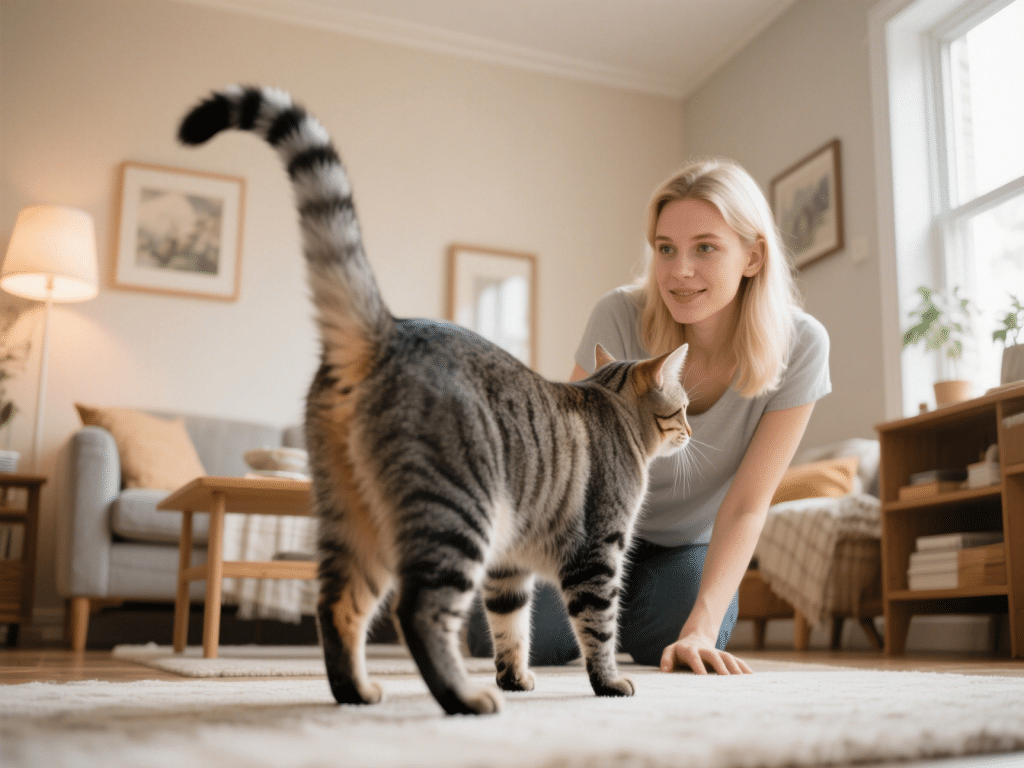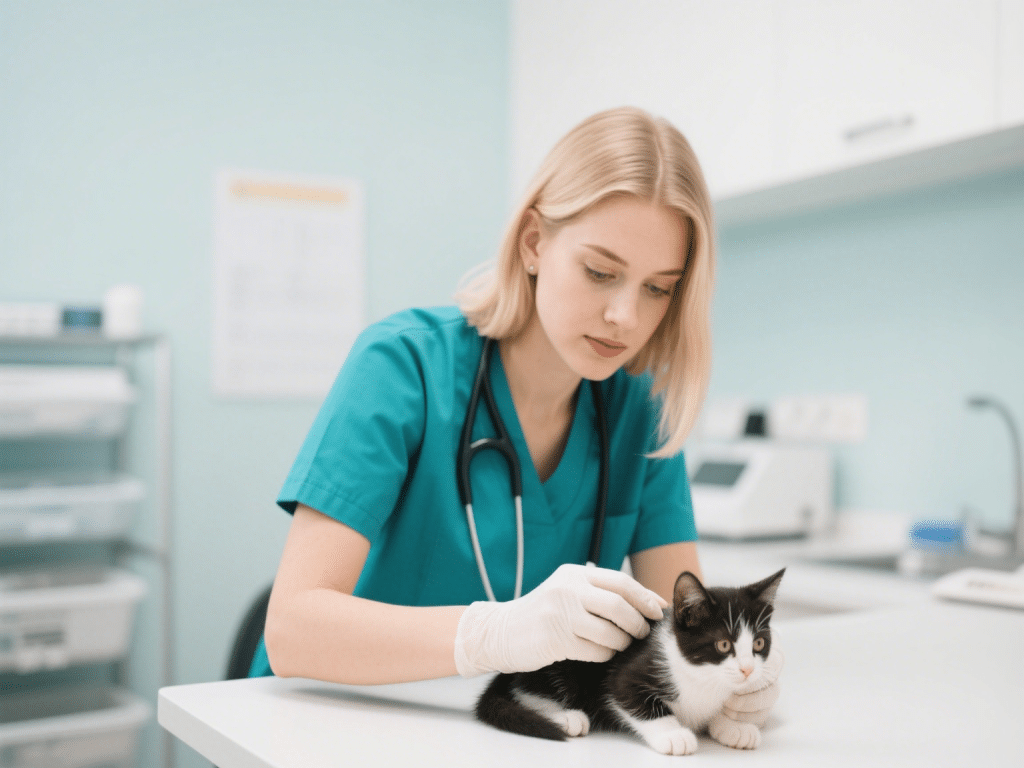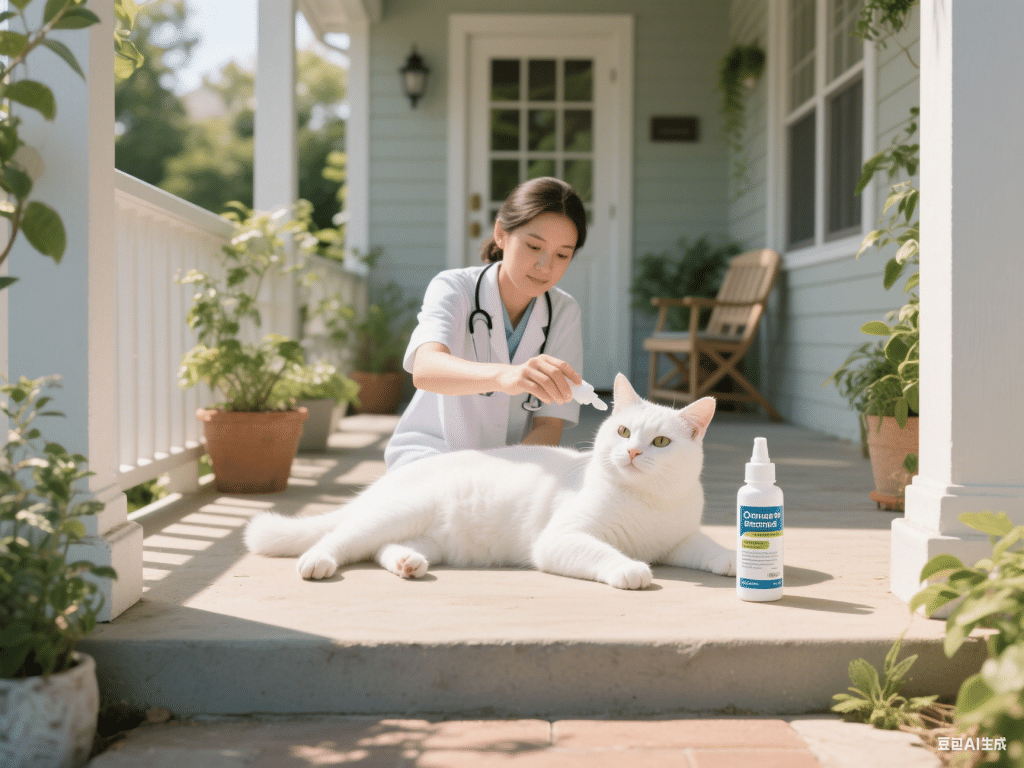Introduction
Cats communicate through subtle body signals—ear position, pupil size, and especially tail movements. By learning to read your cat’s tail language, you can better understand their emotional state, reduce misunderstandings, and deepen your bond.
Common Tail Positions & Meanings
Tail Held High
Description: Upright tail, possibly with a slight curve at the tip.
Meaning: Confidence, contentment, and a friendly greeting. A cat approaching you with a high tail is expressing affection and trust.
Tail Tucked Under
Description: Tail tightly wrapped beneath the body.
Meaning: Fear, insecurity, or submission. Your cat feels threatened or uncomfortable and wants to make itself appear smaller.
Tail Swishing or Thumping
Description: Broad, sweeping movements or quick thumps against the floor.
Meaning: Agitation or mild irritation. Slow, deliberate swishes often indicate annoyance; rapid thumping may precede aggressive behavior.
Puffed-Up Tail
Description: Fur standing on end, making the tail appear bushy.
Meaning: Acute fear or defensive aggression. Your cat feels threatened and is attempting to appear larger to ward off a perceived threat.
Tail Quiver
Description: Rapid, subtle trembling of the tail.
Meaning: Excitement or intense greeting behavior—often seen when a cat is happy to see a trusted human.
Tail Low & Relaxed
Description: Tail hanging below the spine, not touching the ground.
Meaning: Relaxed but cautious. Your cat is calm but attentive to its surroundings.
Tail Wrapped Around Someone
Description: Tail curling around your leg or another cat.
Meaning: Affection and marking behavior. Cats have scent glands at the base of their tail; wrapping around you signifies comfort and ownership.
Tip Twitching
Description: Only the tail’s tip moves, often slightly.
Meaning: Focused interest. Your cat is attentive—watching prey, a toy, or something moving outside. It’s a sign of concentration rather than aggression.
Interpreting Context & Combined Signals
Ears & Pupils: Always consider ear position and pupil dilation. A high tail with forward ears and normal pupils indicates friendly curiosity; a puffed tail with flattened ears and dilated pupils signals fear.
Body Posture: An arched back with a puffed tail typically denotes fear or defensive aggression. A crouched body with a low tail can indicate stress or readiness to pounce.
Vocalizations: Meows, purrs, hisses, and growls accompany tail signals. A tail held high with a chirpy meow suggests greeting, whereas a thrashing tail with a low growl signals aggression.
Practical Tips for Owners
Respect Warning Signs: If your cat’s tail begins swishing rapidly, give them space to avoid bites or scratches.
Use Positive Reinforcement: When your cat approaches with a high tail, reward with gentle petting or treats to encourage friendly behavior.
Avoid Interrupting: If a cat is crouching with a low tail and ears back, they may feel threatened. Allow them to retreat to a safe spot without forcing interaction.
Interactive Play: Stimulate positive tail movements—use wand toys to evoke focused “tip twitching” excitement, strengthening your bond.
Conclusion
Cat tail language is a nuanced form of communication reflecting emotion, intent, and physical state. By observing tail positions in conjunction with overall body language and vocal cues, you’ll interpret your cat’s needs accurately—fostering trust, reducing stress, and enhancing the human–feline relationship.










Comments on "How to Read Cat Tail Language: What Your Feline Is Saying" :